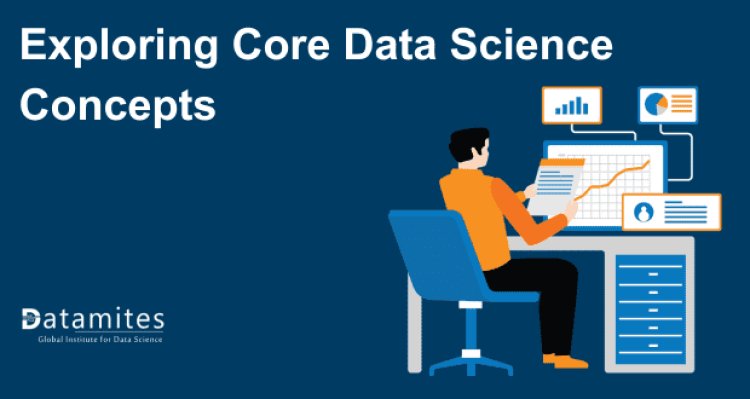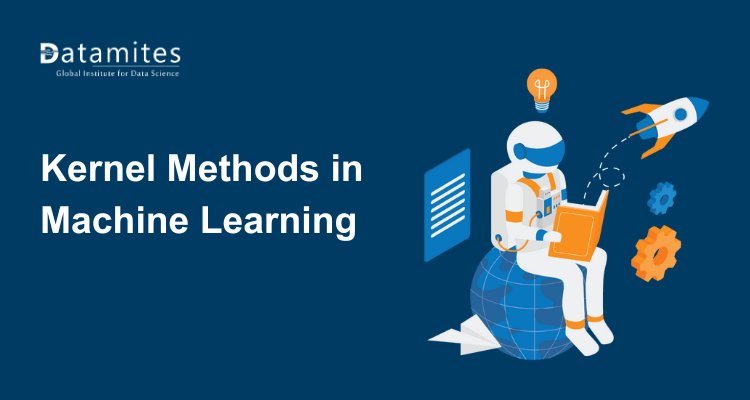Exploring Core Data Science Concepts

Data science has become an essential component of modern business strategy, driving decision-making and innovation across various sectors. Gaining a thorough understanding of core data science concepts is crucial for leveraging its full potential. This article delves into the fundamental aspects of data science, including data collection, data cleaning, exploratory data analysis (EDA), machine learning, and data visualization.
Data Collection
The initial stage of data science, involving the gathering of raw data from various sources.
Sources:
- Internal databases
- Web scraping
- Surveys and questionnaires
- Sensors and IoT devices
- Public datasets and APIs
Importance:
- Ensures the data is both relevant and comprehensive.
- Provides a solid foundation for subsequent analysis.
Challenges:
- Addressing data privacy and security concerns.
- Ensuring the precision and dependability of gathered data.
Read these articles:
- Data Analysts vs. Data Scientists
- Guide to Data Science Career
- Comprehensive Guide on the Data Science Lifecycle
Data Cleaning
The process of identifying and rectifying errors or inconsistencies in the data to enhance its quality.
Common Tasks:
- Addressing missing values through imputation or deletion
- Eliminating duplicate entries
- Correcting data entry mistakes
- Standardizing data formats, such as dates and categories
Importance:
- Ensures the precision and dependability of the analysis.
- Prevents the drawing of misleading conclusions.
Challenges:
- Can be time-consuming and labor-intensive.
- Requires domain expertise to make informed decisions on data correction.
Exploratory Data Analysis (EDA)
A critical phase where data scientists use statistical and graphical techniques to explore and understand the dataset.
Techniques:
- Descriptive statistics such as the mean, median, and standard deviation
- Data visualization methods including histograms, scatter plots, and box plots
- Identifying patterns, trends, anomalies, and outliers
- Formulating and testing hypotheses
Importance:
- Provides deep insights into the data.
- Identifies potential issues and guides further analysis.
Challenges:
- Correct interpretation of visualizations and statistical outputs.
- Ensuring findings are representative and not due to random chance.
Refer these articles:
- Mastering Data Science in India
- Data Science Career Scope in India
- How to Become A Data Scientist in India
Machine Learning
A branch of artificial intelligence dedicated to creating algorithms that can learn from data and make predictions based on it.
Methods:
Supervised Learning:
- Regression (e.g., linear regression, logistic regression)
- Classification (e.g., decision trees, random forests, support vector machines)
Unsupervised Learning:
- Clustering (e.g., K-means, hierarchical clustering)
- Association (e.g., Apriori algorithm)
Reinforcement Learning:
- Algorithms that improve through interactions with an environment to maximize rewards.
Importance:
- Enables predictive modeling and automates decision-making processes.
- Drives innovation through advanced data analysis techniques.
Challenges:
- Selecting the appropriate algorithm for the given problem.
- Ensuring sufficient and high-quality data for model training.
- Balancing overfitting and underfitting.
Data Visualization
The art of presenting data and the results of data analysis through graphical representations.
Tools:
- Software: Tableau, Power BI
- Libraries: Matplotlib, Seaborn, Plotly
Types of Visualizations:
- Graphical representations like bar charts and pie charts
- Illustrations such as line graphs and scatter plots
- Dashboards that combine various visualizations to offer comprehensive perspectives.
Importance:
- Presents intricate data findings in a clear and digestible way.
- Makes data actionable for stakeholders.
Challenges:
- Choosing the right visualization method for the data.
- Ensuring clarity and avoiding misleading representations.
- Balancing detail with simplicity to maintain engagement.
Mastering these core data science concepts—data collection, data cleaning, exploratory data analysis, machine learning, and data visualization—is essential for anyone aiming to excel in the field. Proficiency in these areas enables data scientists to derive valuable insights from data, support strategic decisions, and significantly contribute to organizational success.
DataMites Institute offers top-notch training in Certified Data Science, Artificial Intelligence, Data Analytics, and Python Certification Courses. Recognized by IABAC and NASSCOM FutureSkills, it provides industry-relevant skills and certifications. The institute is renowned for its comprehensive curriculum and expert faculty, ensuring students gain practical knowledge and hands-on experience in cutting-edge technologies.





